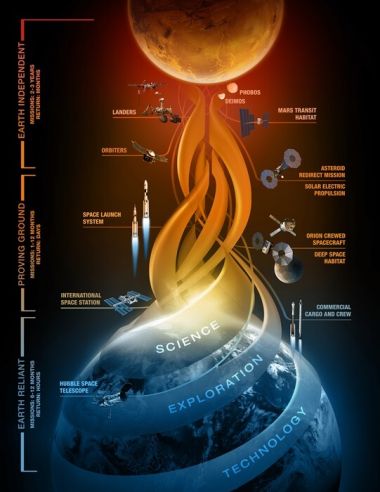NASA lays out 3-step plan on colonising Mars by 2030s: 'Not just to visit but to stay'

The Hollywood blockbuster film "The Martian" depicts how a human being managed to live on Mars for years, surviving the Red Planet's harsh environment using his wits.
In just over a decade, the National Aeronautics and Space Administration (NASA) plans to turn the event depicted in this science-fiction movie—the colonisation of Mars—into reality.
Last week, the space agency unveiled a report entitled "NASA's Journey to Mars: Pioneering Next Steps in Space Exploration," which details how mankind plans to take its first steps on the Red Planet by 2030s, in just three steps.
"We are on a journey to Mars. In the next few decades, NASA will take steps toward establishing a sustainable human presence beyond Earth, not just to visit but to stay," the report, posted on the NASA website, stated.
The first step in NASA's plan to colonise Mars is called "Earth Reliant." This step will make use of the International Space Station to test technologies to be used on Mars, as well as to carefully study the effect of prolonged stay on the Red Planet to human health.
The first phase of NASA's Mars colonisation plan also includes the development of the space agency's most powerful rocket yet, which will be called the Space Launch System (SLS).
The second stage, which is called "Proving Ground," will challenge astronauts to probe and hold operations in deep space, with the end goal of enabling them to return to Earth within a matter of days.
This phase also involves the Asteroid Redirect Mission, in which a solar-electric robotic probe will be deployed to an asteroid, where it will remove a chunk as big as a boulder and take it to the area around the moon called the cislunar orbit.
NASA hopes to accomplish the harvesting and studying of the asteroid sample by year 2025.
The final step, called "Earth Independence," will first deploy astronauts in Martian space, in preparation for an eventual landing on Mars' surface, together with all the equipment to enable them to survive and go back to Earth safely.











